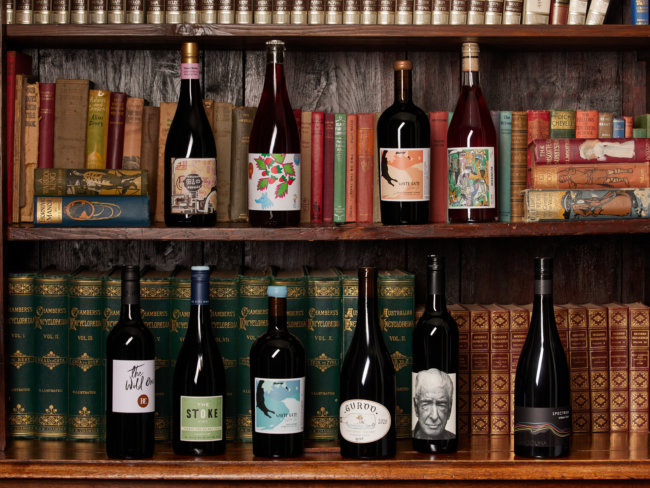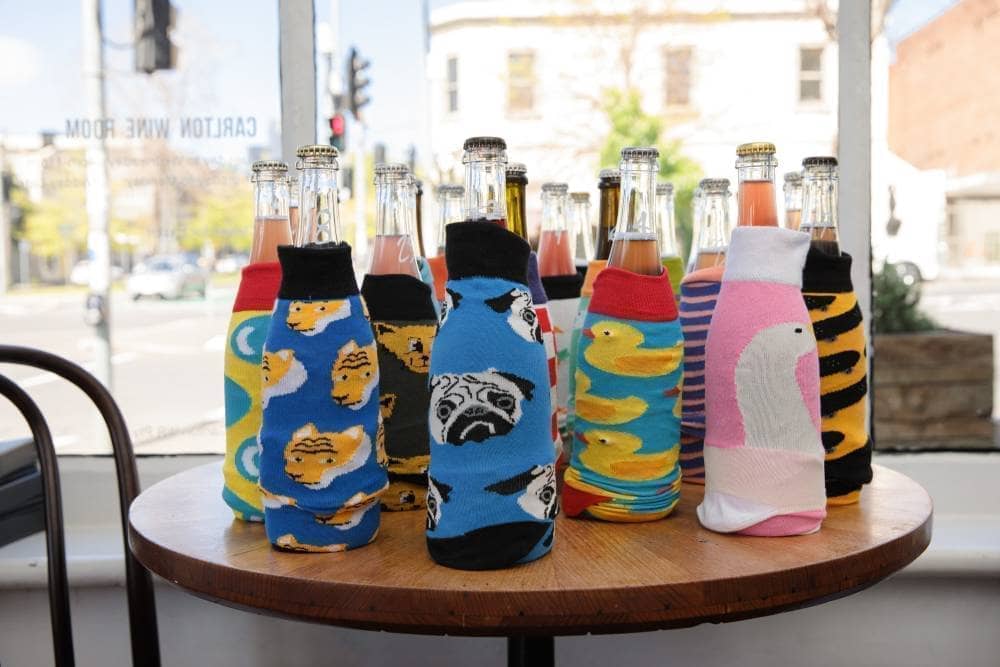For what is Australia’s most planted white variety, chardonnay has sure copped a lot of flak over the years. Perhaps it’s because it is the country’s most planted variety. Tall poppies and all that. And while today chardonnay is arguably the country’s strongest suit, with many tipping it over shiraz for its wealth of world-beating examples, the broad and buttery style that was synonymous with the boom of the 80s and 90s is a thing of the past. Mike Aylward from Mornington Peninsula’s Ocean Eight was one of the pioneers of a fresher style, unencumbered with overt winemaking tricks.
Chardonnay arrived in Australia as part of the seminal Busby collection in the 1830s, but it wasn’t until anonymous vines were identified in Mudgee, NSW, in the late 1960s that it started to make any kind of impression. And what a mark it made.
Winemakers in the 80s and 90s became excited about how they could sculpt the wines with classic techniques, enriching and adding layers of flavour through the use of new oak, barrel fermentation, malolactic fermentation and lees stirring. And though there were producers turning out great examples, there were legions lined up behind them who pushed the boat out too far, resulting in broad wines with short shelf lives.
“Some people were making some really beautiful bigger styles,” says Aylward. “but I think you had a surge in plantings of chardonnay and producers making it, and they didn’t all spend enough time on the quality of the fruit and they put more focus on really expensive oak, and you ended up with big buttery chardonnay, which was a great shame for producers who were making really spectacular [bigger] styles.”
![]()
Mike Aylward in the underground barrel room at Ocean Eight.
The damage was certainly done, with a movement away from not just a style of chardonnay, but from chardonnay itself. There were many proud members of the ‘ABC’ (anything but chardonnay) brigade, and it became a very popular sport to bash the variety – much as it did a little later when we tired of the tsunami of Kiwi sauvignon blanc that crashed on our shores. And although the sales of chardonnay were still strong, in fine wine circles there was much trepidation.
Chardonnay inspiration
Aylward’s family had founded Kooyong in 1996, which became a star producer on the Mornington Peninsula, before they sold to establish Ocean Eight. “We sold Kooyong in 2004, and I wanted to do something pretty different,” says Aylward. “We went over to Burgundy to look at different styles of chardonnay… we were tasting 03, 04 and 05, for both pinot and chardonnay… 03 was a warm year, 04 was a spanking year for white Burgundy, and 05 was probably somewhere in the middle.”
That tiered range of vintages provided inspiration for Aylward, who was in his 20s, to champion a style of chardonnay that was uncommon in Australia at the time. “What we saw with the 04s was this amazing acidity, and lemon and grapefruits… citrus flavours in all the wines. And then we went to Chablis as well, which was absolutely phenomenal. And that really sparked the simple thinking that cool climate Australian chardonnay like in Mornington could do that style really well.”
![]()
Aylward uses only old oak to make his Verve chardonnays.
That notion quickly materialised into reality, and the ‘Verve’ Chardonnay was born in 2006. “So, we thought we’d come back and pick our fruit probably a week before anyone else on the peninsula, and the next thing was the oak regime was really important. Older oak with barrel fermentation was giving beautiful chardonnay characters, rather than artificial oak flavours. They were the two major things we brought back.”
Aylward wasn’t alone in this approach, with rising sentiment that chardonnay needed a rethink, independently driving makers to reconsider their philosophy. “With a demand for less oaky, cleaner styles, probably a few of us came to that realisation at that time,” he says, “but I really got the inspiration from those trips.”
And though Aylward may have been working in parallel with makers like Steve Webber of De Bortoli and Dave Bicknell of Oakridge (both in the Yarra Valley) in the pursuit of cooler styles, the local mood was somewhat different. “Within Mornington, people were like, ‘What are they doing? It’s too early.’ But when the wines started to go into shows, they showed really well, even if they were towards more of a Chablis style. Now, quite a lot of people are picking on the earlier side to get that racy acidity.”
The chardonnay method
That idea of style, however, was not a blanket philosophical choice, but rather one tailored to the Ocean Eight site. “You need a cooler climate to do that ‘Verve’ style because you get longer ripening. So, if you’re picking at that acidity, you’ll still have flavour development. And that’s the key. You can’t make that style in very many places.
“Wines for sparkling base are generally picked at 10–11 Baume, and that’s really green apples and pretty tart, and once you get around to that 11.5, there’s a change from green apples to grapefruit and citrus. But the window for picking that is pretty tight, so when you see the change from green apple to grapefruit, that’s the time to get that fruit off.”
![]()
Ocean Eight vineyard.
Interestingly, the very decision to make a leaner style also drove the creation of a richer, more textural chardonnay in the Ocean Eight ranks: the ‘Grande’.
“We’ve got seven acres of chardonnay with four different clones,” says Aylward. “When we started to pick earlier, three of them were giving us really beautiful grapefruit and lemon characters, which is what I was absolutely chasing. But one of the clones was giving us passionfruit, which was taking away from those beautiful citrus characters. So, we decided rather than to pull that out, we picked it riper, about a week riper, and gave it a little more malo and about 10 per cent new oak. What you find in Mornington is that even with fuller styles you get this beautiful line of acidity coming through; we get the richness, but we get the really nice acidity as well. So, you get a contrast in styles, and I love both.”
We’ve got seven acres of chardonnay with four different clones. When we started to pick earlier, three of them were giving us really beautiful grapefruit and lemon characters, which is what I was absolutely chasing. But one of the clones was giving us passionfruit, which was taking away from those beautiful citrus characters. So, we decided rather than to pull that out, we picked it riper, about a week riper, and gave it a little more malo and about 10 per cent new oak. What you find in Mornington is that even with fuller styles you get this beautiful line of acidity coming through; we get the richness, but we get the really nice acidity as well. So, you get a contrast in styles, and I love both.
![]()
Whereas the Verve chardonnay is made with only old oak, around 10 per cent of barrels used to make the Grande are new.
That response to what vine, soil and climate give, rather than the blanket application of a dogma is telling. A wave of imitative styles followed both the buttery chardonnay boom and the lean and racy direction that has been more recently adopted, and those that didn’t match method to material were consistently left wanting. Indeed, as the duality of Ocean Eight’s Chardonnays highlight, a prescriptive approach is problematic.
Aylward believes that responding to site is critical, but the journey to truly understanding a vineyard is indeed a long one, but that’s part of the thrill, and perhaps even more so when talking about chardonnay. “I think with chardonnay, you taste the region a lot more than with other wines,” he says. “Mornington is pretty young. The first phase was about prospecting for varieties, and the last 20 years has really gone into finding the best sites. The sites that were planted some 20 years ago, we’re starting to see the quality now. And that’s the next exciting part of the story.”
Tasting the two styles across the years
![]() 2017 Ocean Eight ‘Verve’ Chardonnay
2017 Ocean Eight ‘Verve’ Chardonnay
This has the race and drive you’d expect from a ‘Verve’ bottling, and also from the cool 2017 vintage, with a classic citric fruit profile and a coolly ripe suggestion of white stone fruit. But there are subtle winemaking inputs contributing to the detail too, with smoky notes and a mealy, umami-laced lees character. There’s a slightly slippery, saline feel to the palate, with real poise and drive, the winemaking sitting in balance with the lemon-scented fruit and thrilling spine of acidity.
2016 Ocean Eight ‘Verve’ Chardonnay
This shows the riper vintage, though it is still savoury, reserved and fine in feel, with citrus and cool white stone fruit, stone fruit kernel, a hint of beeswax, ripe grapefruit, Meyer lemon. Winemaking sits back in this, but there’s a suggestion of oak knitting into barrel ferment notes. The front palate is textural with some lees cushioning, and acid kicks in to carry the wine through a racy finish.
2016 Ocean Eight ‘Grande’ Chardonnay
This has fuller stone fruit notes, some charry oak interplay, a little crystallised lemon and white peach, with a textural play across the palate, as fruit weight and a reserved plushness give it real presence. There’s a lusciousness to the texture, and a gently rounded quality to the palate with some smoky notes, complex sulphide characters and orchard blossom highlights, and all cleaning up with a classically ripe and persistent acid line.
2013 Ocean Eight ‘Grande’ Chardonnay
This is starting to slip into some maturity, with softening notes of creamed honey, toasted nuts, white and cool yellow stone fruits, stony minerals and a whisper of charry oak. There’s a milky richness running through the palate, a little grip from the oak, some pops of crystallised peel and lemon curd. There are some savoury secondary notes coming through on the textural palate, a toasty, mealy edge, and finely laced acid gently tugging all into line.
Ocean Eight are a partner of the Wineslinger Awards.





 2017 Ocean Eight ‘Verve’ Chardonnay
2017 Ocean Eight ‘Verve’ Chardonnay



